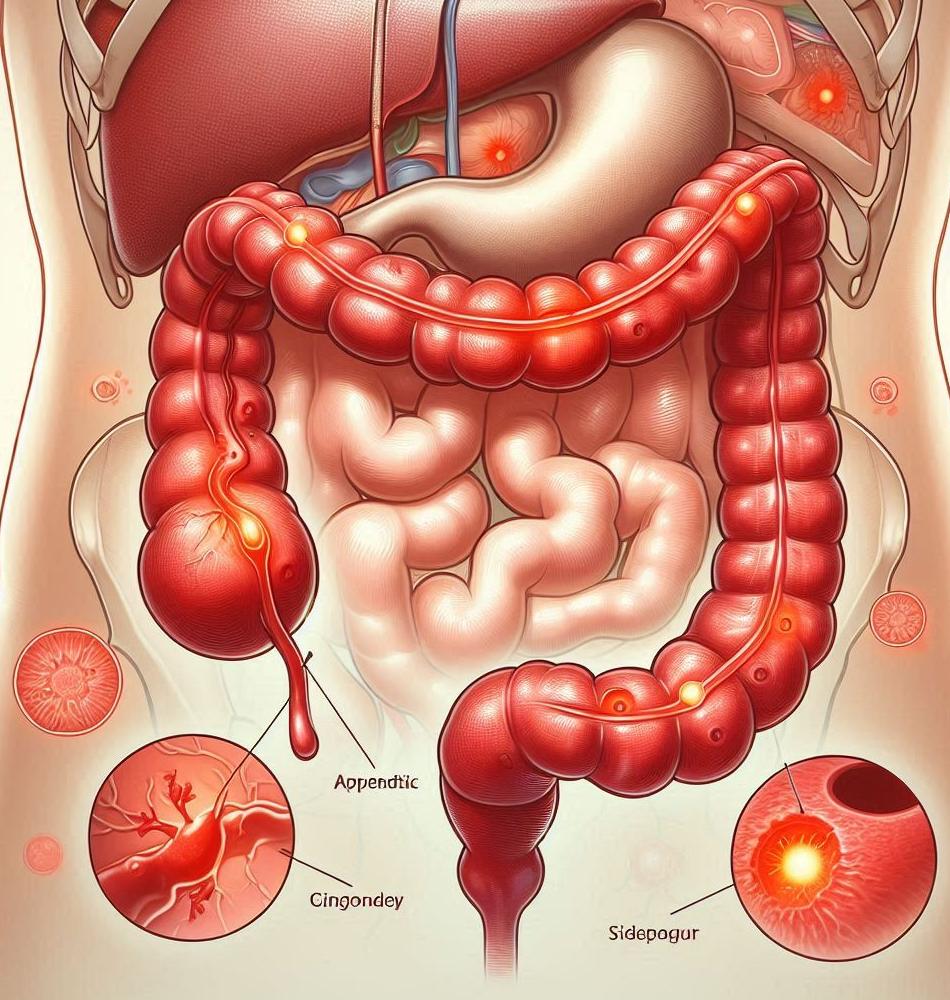Understanding Appendicitis: How Long Can Symptoms Last Before Rupture? 🔍
Appendicitis is a medical condition that strikes fear into the hearts of many. A sudden sharp pain in the abdomen can send anyone rushing to the hospital, wondering if they will need surgery. What many do not realize is how crucial the timing can be when it comes to diagnosing and treating this condition. In this article, we will dive into how long symptoms of appendicitis can last before a rupture occurs, the signs to watch for, and the importance of seeking medical attention promptly.
The Basics of Appendicitis 📚
Before we explore the timeline of symptoms, it is essential to understand what appendicitis is. This condition occurs when the appendix, a small pouch attached to the large intestine, becomes inflamed. The exact cause of this inflammation can vary, but it often results from a blockage that traps bacteria inside the appendix. Once this happens, the bacteria multiply, leading to inflammation, pus formation, and in some cases, rupture.
Symptoms typically appear abruptly, but the duration can vary significantly among individuals.
Symptoms: A Red Flag 🚩
Appendicitis symptoms can mimic other ailments, making it crucial to recognize them early. Here are the most common symptoms to watch for:
- Abdominal pain, often starting around the navel and shifting to the lower right abdomen
- Nausea and vomiting
- Anorexia, or loss of appetite
- Fever
- Swelling in the abdomen
- Constipation or diarrhea
Timeline of Symptoms 🕒
The timeline of appendicitis symptoms can differ among people. Generally, the progression can be outlined as follows:
Initial Phase (1 to 6 Hours) ⏳
In the first few hours, individuals may experience mild to moderate abdominal pain and discomfort. This pain typically starts around the center of the abdomen, then gradually migrates to the lower right quadrant. Patients may also feel nauseous during this period.
Acute Phase (6 to 24 Hours) ⏳
If untreated, the symptoms worsen over the next day. The pain becomes sharper and more localized in the lower right abdomen. Nausea can increase, complemented by vomiting and a general feeling of illness. Fever may develop during this phase, signaling that an infection has taken hold.
Critical Phase (24 to 72 Hours) ⏰
After 24 hours, if the appendicitis remains untreated, the risk of rupture increases significantly. The pain may become excruciating, and the individual will likely experience significant abdominal swelling. At this stage, it is essential to seek immediate medical attention as any delay can lead to severe complications.
What Happens When It Ruptures? ❗
A ruptured appendix can lead to acute peritonitis, a life-threatening situation where the abdominal cavity becomes infected. Symptoms of ruptured appendicitis may include:
- Sudden relief of pain followed by intense pain
- Severe abdominal swelling
- High fever
- Rapid heart rate
How Long Can Symptoms Last? ⌚
In summary, the symptoms of appendicitis progress within a span of hours to days. Without surgical intervention, symptoms can linger for days before reaching critical severity. However, medical experts recommend seeking immediate treatment as soon as appendicitis is suspected to prevent complications such as rupture.
Immediate Action: What Should You Do? 🚑
When faced with the symptoms of appendicitis, taking action is crucial. Here are some steps to follow:
- Do not ignore your symptoms or delay seeking medical help
- Avoid taking pain relievers or laxatives as they can complicate diagnosis
- Stay hydrated but avoid eating or drinking until evaluated
- Call for emergency assistance if symptoms worsen rapidly
Frequently Asked Questions ❓
- What is appendicitis?
- How can I differentiate between appendicitis and other abdominal pain?
- What are the risk factors for developing appendicitis?
- Is surgery always necessary for appendicitis?
- How can I prevent appendicitis?
- What are the potential complications of untreated appendicitis?
The Importance of Timely Diagnosis and Treatment ⚠️
Ultimately, understanding appendicitis and its symptoms is vital for anyone, especially for young adults and adolescents. Recognizing the signs and symptoms early can prevent complications and lead to better outcomes.
Healthcare providers recommend being vigilant about abdominal pain, particularly when paired with nausea and fever. Note the progress of your symptoms and don’t hesitate to contact a medical professional.
Conclusion 💡
Understanding how long symptoms of appendicitis can last before a rupture occurs can mean the difference between a straightforward treatment and a severe medical emergency. The key to mitigating the risks associated with appendicitis lies in early recognition and prompt evaluation by a healthcare professional. Always err on the side of caution—if you suspect appendicitis or experience severe abdominal pain, seek medical assistance immediately to avoid potential complications such as a rupture.







